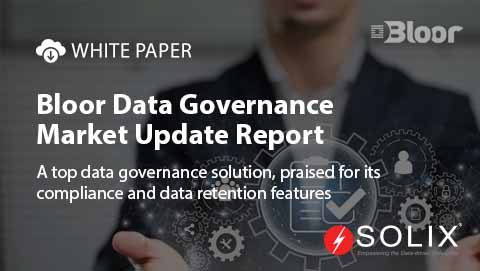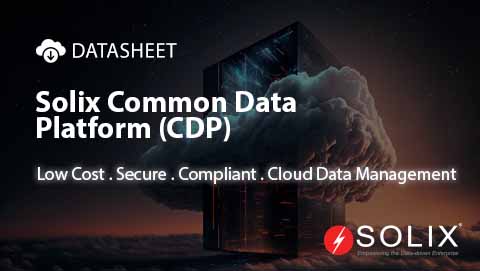Unstructured Data
What is Unstructured Data?
Unstructured data refers to information that lacks a predefined format or organization. Unlike structured data, which is typically stored in rows and columns within databases, unstructured data doesn’t conform to a rigid schema, making traditional data analysis methods challenging. However, with the ever-growing volume of information being generated, unstructured data holds immense potential in various fields.
Features of Unstructured Data
- Diverse format:
Text documents, emails, social media posts, images, videos, audio files, sensor data, etc.
- Variable length:
Can range from short messages to lengthy documents or large multimedia files.
- Unpredictable content:
It may contain elements like text, numbers, symbols, and special characters.
Where is Unstructured Data Generated?
Unstructured data is produced in various settings, including:
- Social media:
User posts, comments, and shares.
- Enterprise applications:
Emails, documents, presentations, and customer interactions.
- Internet of Things (IoT) devices:
Sensor data from connected devices.
- Scientific research:
Images, audio recordings, and research data.
- Multimedia content:
Images, videos, and audio files.
Benefits of Unstructured Data
- Richer insights:
Provides a deeper understanding of customer sentiment, market trends, and user behavior.
- Improved decision-making:
Enables data-driven decisions based on comprehensive information.
- Enhanced innovation:
Fuels research and development efforts by offering valuable data insights.
Challenges of Unstructured Data
- Storage and management:
Requires specialized storage solutions due to its diverse format and large volumes.
- Integration with existing data:
It can be challenging to integrate with structured data for comprehensive analysis.
- Data analysis:
Advanced techniques like Natural Language Processing (NLP) and machine learning are required for efficient analysis.
How is Unstructured Data Stored in the Enterprise Information Architecture?
Organizations utilize various methods to store unstructured data within their information architecture:
- Data lakes:
Central repositories for storing large volumes of raw data in various formats.
- Content management systems (CMS):
Manage and organize digital assets like documents, images, and videos.
- Cloud storage:
Scalable and cost-effective storage options for large unstructured datasets.
How Can Unstructured Data be Used for Analytics?
Advanced analytics techniques enable organizations to unlock the value of unstructured data:
- Natural Language Processing (NLP):
Analyzes textual data to extract sentiment, identify entities, and understand context.
- Machine learning:
Identifies patterns and trends in unstructured data for predictive analysis and anomaly detection.
- Big data analytics:
Processes and analyzes large volumes of data from various sources, including unstructured data.
How is Unstructured Data Different from Structured Data?
Structured data refers to information organized in a predefined format, typically stored in rows and columns within databases. It adheres to a specific schema, making it easily searchable and analyzable using traditional methods. In contrast, unstructured data lacks a defined structure and requires advanced techniques for analysis.
Comparing Structured, Semi-structured Data and Unstructured Data
| Feature | Unstructured Data | Structured Data | Semi-structured Data |
|---|---|---|---|
| Format | No predefined format | Predefined schema (e.g., tables, spreadsheets) | Self-describing, flexible format (e.g., JSON, XML) |
| Organization | No organization | Highly organized with clear data types and relationships | Partially organized with some inherent structure |
| Examples | Text documents, audio recordings, video files | Customer databases, financial records, sensor readings | Emails, web documents, social media posts, images |
| Analysis | Requires advanced techniques like Natural Language Processing (NLP) | Easy to analyze using standard tools and queries | Requires data parsing and transformation for analysis |
| Scalability | Highly scalable due to flexibility | Less scalable due to rigid schema | More scalable than structured data |
| Flexibility | Highly flexible due to lack of predefined structure | Limited flexibility to accommodate new data types | More flexible than structured data but less than unstructured |
| Storage | File systems, cloud storage, content management systems (CMS) | Relational databases | No specific storage format, often stored in file systems or NoSQL databases |
Unstructured data, despite its challenges, holds immense potential for organizations across various sectors. By leveraging advanced technologies and strategies, businesses can unlock valuable insights and unlock the hidden potential of this ever-growing data source.
FAQs
What are some examples of how businesses can use unstructured data?
Businesses can use unstructured data for various purposes, including:
- Improving customer service:
Analyzing customer feedback from social media and emails to identify areas for improvement.
- Developing targeted marketing campaigns:
Analyzing customer behavior and preferences to personalize marketing messages.
- Identifying fraud and security risks:
Analyzing network traffic and activity logs to detect anomalies and potential threats.
What are the ethical considerations surrounding the use of unstructured data?
Organizations should ensure responsible and ethical use of unstructured data, considering:
- Data privacy:
Obtaining user consent and adhering to data privacy regulations.
- Data security:
Implementing appropriate security measures to protect sensitive information.
- Transparency:
How data is collected, stored, and used.
How will the future of unstructured data unfold?
The future of unstructured data is expected to see advancements in:
- AI and machine learning:
Continuously evolving techniques for efficient and accurate analysis of diverse data formats.
- Cloud storage and computing:
Scalable and cost-effective solutions for managing and analyzing large datasets.
- Integration with structured data:
Improved methods to seamlessly integrate unstructured data with existing data sources for holistic insights.





